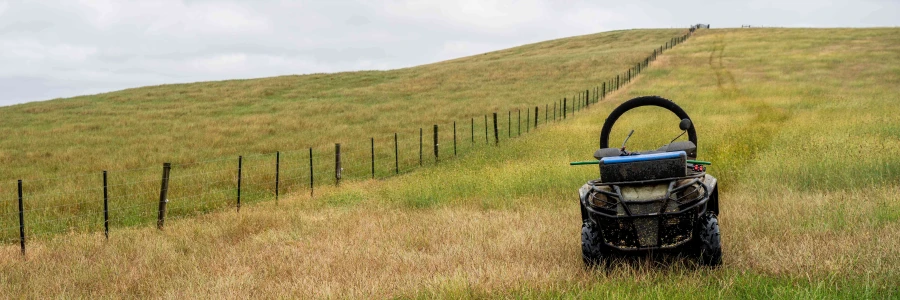
Quad bike safety - a timely reminder
Posted on Tuesday, 17 June 2025 under Latest Edition,
Recent weeks have seen a worrying spike in serious quad bike accidents across the country including fatalities in South Canterbury and Waikato. These two tragic incidents serve as a stark reminder of the risks involved when working on farm vehicles, particularly during winter when ground conditions are often less forgiving.
Quad bikes remain one of the most common causes of serious injury and death on New Zealand farms. Whether you're moving stock, checking breaks, or running daily rounds, it’s crucial to pause and think about how you’re managing risk.
Please take a moment to review safety practices on your farm. Here are some reminders that are worth reinforcing with you and your team:
- Wear a helmet: Helmets are one of the most effective ways to reduce the risk of serious head injury. It’s your last line of defence and a simple choice that could save your life.
- Keep to the speed that suits the terrain: Slippery or steep slopes, wet paddocks, mud, and poor visibility require extra caution.
- Ensure all quad bikes are fitted with a crush protection device (CPD): CPDs significantly reduce the risk of being trapped underneath a quad bike in a rollover – a leading cause of fatal injuries.
- Don’t overload your quad: It affects balance and handling – especially with passengers or heavy gear.
- Use the right vehicle for the job: A side-by-side or ute may be safer if you’re carrying loads or passengers.
- Keep machines well-maintained: Brakes, tyres, and steering should all be regularly checked, especially in winter.
- Train anyone using your gear: That includes employees, contractors, casuals, and family members.
Just as with our own employees, we want to see every farmer and farm worker make it home safely every day. The work you do is demanding enough without adding unnecessary risk so please take these recent events as a prompt to stop, check, and if need be – speak up.
If you're looking for resources or guidance on safer on-farm practices, visit Safer Farms for more information.



